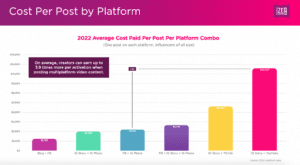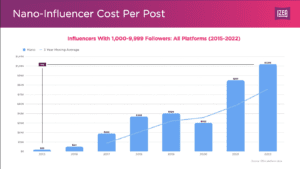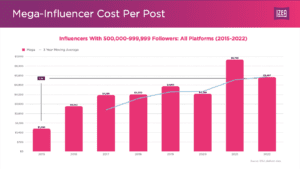When it comes to influencer marketing, you might assume that influencers jump at the chance to work with companies. After all, these agreements often come with free products, compensation, and a credibility boost. While influencers do welcome the opportunity to rep brands, there are certain factors that influencers consider when working with brands to endorse a product or promote an event. Yes, money is on the list, but the biggest priority for many influencers is preserving their own brand.
What influencers want in a partnership
Shared brand relevance
Just as a company looks for an influencer who has a similar audience, values, and beliefs, so does the influencer. An influencer’s power is based on the trust he or she has built with their followers. To represent a brand or a product that’s not an organic fit can be just as damaging to an influencer as it is to a company.
How do influencers know if a company is a good fit? They do their homework. Influencers review company websites, troll social posts and comments, search for headlines regarding the company, and talk with the company’s influencer liaison about the company’s beliefs. They might even research previous influencers that have worked with the company and reach out to them regarding their experience. Influencers want to work with brands that they authentically believe in.
Creative freedom
Influencers say they produce their best content when they’re given some creative freedom. During a negotiation, an influencer and a company will set up specific terms for content, but influencers are less likely to work with a company that tries to dictate every detail.
What’s considered dictating? To understand, here’s a look at what contracts typically include:
- They type of content to produce like pictures, videos, or blog review.
- A description of the campaign.
- The dates and length of the campaign.
- Who will preview the post before it’s published.
- Who will handle the comments.
- Cancellation clauses.
- NDA (Non-disclosure agreement).
- Payment details.
- Who owns of the content once it’s published.
Influencers want brands to trust that they know how to represent a product to their audience. Companies can review the post before it’s published, provide direction on the tone of the campaign, and even request certain hashtags be used, but leave the content creation to the influencer.
Ownership of content
Who will own the content once it’s produced? A company might assume they receive ownership of the content since they’re paying the influencer to create it. That’s not always the case. In fact, more and more influencers want to own the content, since they’re creating it and sharing it on their channels, and license the content to the company for a specific period of time.
With this kind of arrangement, a company could repurpose or reuse the influencer’s content for say, six months. After that, the company can’t use it for any marketing purposes. These terms are all discussed during a negotiation, but it has become one of the factors influencers consider before working with a brand.
Payment
Influencers do want fair compensation, but how much do you pay an influencer to endorse a product? Influencer marketing is a fairly new field, so influencers and brands alike are still working out competitive pay. However, IZEA’s State of Influencer Earnings™ report gives us a look at what influencers are being paid. Payment is often determined by two things: the platforms being used and an influencer’s audience size.
Take a look at the chart below. Influencers were paid the most, about $12,007 for creating combo posts for Instagram Story and YouTube. The least lucrative combination for an influencer is posting to Facebook and Blogs, which nets an influencer about $1,735.

The number of followers an influencer has is also a factor. In 2022, nano-influencers, those with 1,000-9,999 followers, made about $1,105 per post. In 2019, influencers were making about half that, per post.

As an influencer’s audience grows, so does their pay. For mega-influencers, those with 500,000-999,999 followers, the average payout in 2022 was about $5,500. That’s about five times more than a nano-influencer makes on a sponsored campaign. However, the company is paying for the additional reach.

Of course, compensation will be discussed long before any content is created, but it’s important to know what influencers are expecting.
Influencer marketing is a growing field. In its infant stages, it wasn’t uncommon for an influencer to create a sponsored ad in exchange for a free product. Times have changed though. Influencers are selective about the brands they work with and aren’t afraid to say no if the company isn’t a good fit. Understanding what influencers are looking for in this modern marketing world will help brands like yours create a mutually beneficial influencer marketing campaign.
Learn more about our IZEA Flex influencer marketing platform to manage all aspects of a campaign.
Influencers:
Looking to partner with industry-leading brands? Create your free profile today.
Marketers:
The world’s biggest brands trust IZEA’s influencer marketing software and managed solutions. Find out which solution is right for you.








